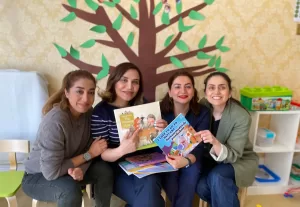In the realm of early years education, recognising and accommodating the different paces of learning is crucial. Each child is unique, with their own set of strengths, weaknesses, and learning styles. As they embark on their educational journey, it becomes evident that a one-size-fits-all approach does not work. Instead, understanding and embracing the different paces of learning can significantly impact a child’s development and future success.
What is the Importance of Different Paces of Learning?
The importance of recognising different paces of learning in early years education cannot be overstated. Children develop at varying rates, and each has their own way of processing information and acquiring new skills. By acknowledging these differences, educators can create a more inclusive and supportive learning environment. This approach ensures that no child is left behind and that each one receives the individual attention they need to thrive.
Understanding different types of learning also plays a pivotal role in early years education. Some children may excel in visual learning, while others might find auditory or kinesthetic methods more effective. By identifying and catering to these diverse learning styles, educators can enhance the learning experience and promote better educational outcomes.
What is the Effect of Different Paces of Learning?
The effects of recognising and accommodating different paces of learning are profound. When children are allowed to learn at their own speed, they tend to develop a deeper understanding of the material. This leads to increased confidence and a love for learning, which are essential for long-term academic success. Conversely, forcing children to conform to a standard pace can lead to frustration, low self-esteem, and a negative attitude towards education.
Moreover, understanding the different types of learning helps in addressing the individual needs of each child. For instance, a child who learns best through hands-on activities will benefit significantly from a curriculum that includes practical experiments and interactive sessions. This tailored approach not only boosts comprehension but also makes learning more enjoyable and engaging.
How to Support Your Child’s Pace of Learning
Supporting your child’s pace of learning involves a combination of observation, patience, and personalised strategies. Firstly, it is important to observe your child’s learning preferences and strengths. Notice whether they respond better to visual aids, storytelling, hands-on activities, or other methods. Once you understand their preferred learning style, you can tailor your support accordingly.
Encouraging a growth mindset is also crucial. Children should be taught that it is okay to make mistakes and that learning is a continuous process. Celebrate their achievements, no matter how small, and provide constructive feedback that focuses on their efforts rather than just the results.
Creating a conducive learning environment at home is equally important. Ensure that your child has access to the necessary resources, such as books, educational toys, and a quiet space for studying. Regular communication with teachers can also provide valuable insights into your child’s progress and areas that may need additional support.
Also Read: How to Choose the Best Nursery for Your Child’s Early Years
The Freedom to Learn at Your Own Pace
The freedom to learn at one’s own pace is a fundamental aspect of early years education. When children are not rushed or pressured, they can explore topics that interest them, leading to a more profound and enthusiastic engagement with learning. This autonomy fosters creativity and critical thinking, skills that are vital in today’s rapidly changing world.
Additionally, allowing children the freedom to learn at their own pace helps to build resilience and adaptability. They learn to take ownership of their education, set personal goals, and develop problem-solving skills. This sense of independence and responsibility lays a strong foundation for future academic and personal success.
What is the Role of Nursery?
Nurseries play a pivotal role in catering to the different paces of learning. High-quality early years education settings, like Happy Chalet Stanmore Nursery, are equipped with experienced educators who understand the importance of personalised learning. They create a nurturing and stimulating environment where children can explore and learn at their own speed.
Nurseries provide a variety of activities and resources that cater to different learning styles. Whether it’s through structured play, interactive storytelling, or outdoor exploration, children are encouraged to discover and develop their interests. Furthermore, nurseries often work closely with parents to ensure that each child’s unique needs are met, fostering a seamless transition from home to school.
Conclusion
In conclusion, recognising and supporting the different paces of learning in early years education is essential for fostering a love of learning and ensuring long-term success. By understanding the importance and effects of different types of learning, parents and educators can provide the necessary support and create an environment that allows children the freedom to learn at their own pace. Nurseries play a crucial role in this process, offering a personalised and inclusive approach to early education. Embracing these principles can make a significant difference in a child’s educational journey, setting the stage for a bright and promising future.






